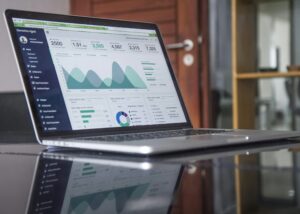In agriculture, a single lead can change your year.
One good conversation at a farm show. One inbound request from your website. One warm referral from a dealer.
Any of those could turn into:
- A multimillion-dollar farmland loan
- A six-figure equipment purchase
- A full farm insurance policy
- A multi-year farm accounting software subscription
But not every lead turns into a sale. And not every dollar you spend to find those leads pays off.
That’s the problem.
Too many ag businesses set marketing budgets based on what feels right or what’s left after other expenses. In a space where decisions can take months and involve multiple players, guessing can get expensive quickly.
The most successful ag companies don’t guess. They run the numbers.
Why Ag marketing doesn’t fit the DTC playbook
In e-commerce or consumer industries, the buyer’s journey is fast, trackable, and often solo. Someone sees an ad, clicks through to a product page, adds to cart, and checks out—all in the span of hours, days, or maybe a couple of weeks. Attribution is relatively clean. You know what channel worked, and you can scale it.
Ag doesn’t work like that.
You’re selling high-value, high-consideration products. Your buyers think in seasons and years. They consult agronomists, lenders, retailers, and family members before making a decision. The process is slower, more relationship-driven, and often spans multiple touchpoints.
Even the path your product takes to market is layered. In row crops, a product starts with the manufacturer, moves through a distributor, and is often sold through a retailer. But the final purchasing decision often comes down to the personal influence of a trusted sales agronomist, a local dealer, or even a neighboring farmer. That human connection can outweigh price, performance, or brand.
In livestock health, the sales path is just as indirect. Products are often purchased through animal health distributors or feed companies. Sometimes a vet clinic is the one making prescriptions. You may run the marketing campaign, but someone else facilitates the sale and owns the relationship.
And if you’re in ag lending or insurance, the complexity plays out differently. A lead may ask for a quote, then take weeks to weigh options, talk to family or partners, compare terms, and finally circle back with follow-up questions or requests for a full proposal. You might not know when or how they came to a decision—only that they’re ready to move.
Attribution isn’t clean. But it’s still worth chasing.
Let’s be honest: clean attribution is rare in ag.
Maybe someone saw your ad on Facebook. Then they talked to their agronomist. Then they stopped by your booth at Commodity Classic. Maybe a week later, they saw a display ad you placed on AgWeb or read a short writeup about your new product on Upstream Ag Insights. Eventually, they asked their retailer for a quote.
You didn’t close the deal online, but your marketing likely played a key role in shaping the decision.
This is the messy middle. It’s not linear or always trackable.
But just because you can’t see every step doesn’t mean you shouldn’t try to understand the path.
Attribution in ag requires more patience, smarter estimation, and a willingness to accept imperfect data. The exception here is the data you feed back to Google or Meta paid algorithms: that conversion info should be as close to airtight as you can get. (We’ll show you how in a future post.)
With the rest of your attribution data, you can’t always get a clean read on what worked. But you can get close enough to make confident decisions.
From gut feeling to growth… and leads
Whether you’re trying to close three farmland loans this quarter, bring on 30 new growers this year, or get your product on 50,000 trial acres next season, your marketing budget shouldn’t be a shot in the dark.
To make smart investments, you need to start with a clear understanding of what a lead is actually worth to your business.
Once you know that number, everything gets easier. You can back into your budget, focus on the right channels, and double down on what drives real returns.
In the next post, we’ll walk through the first step: figuring out what a customer is worth over time. Because in agriculture, long-term relationships are where the real value is, and knowing that changes everything.




